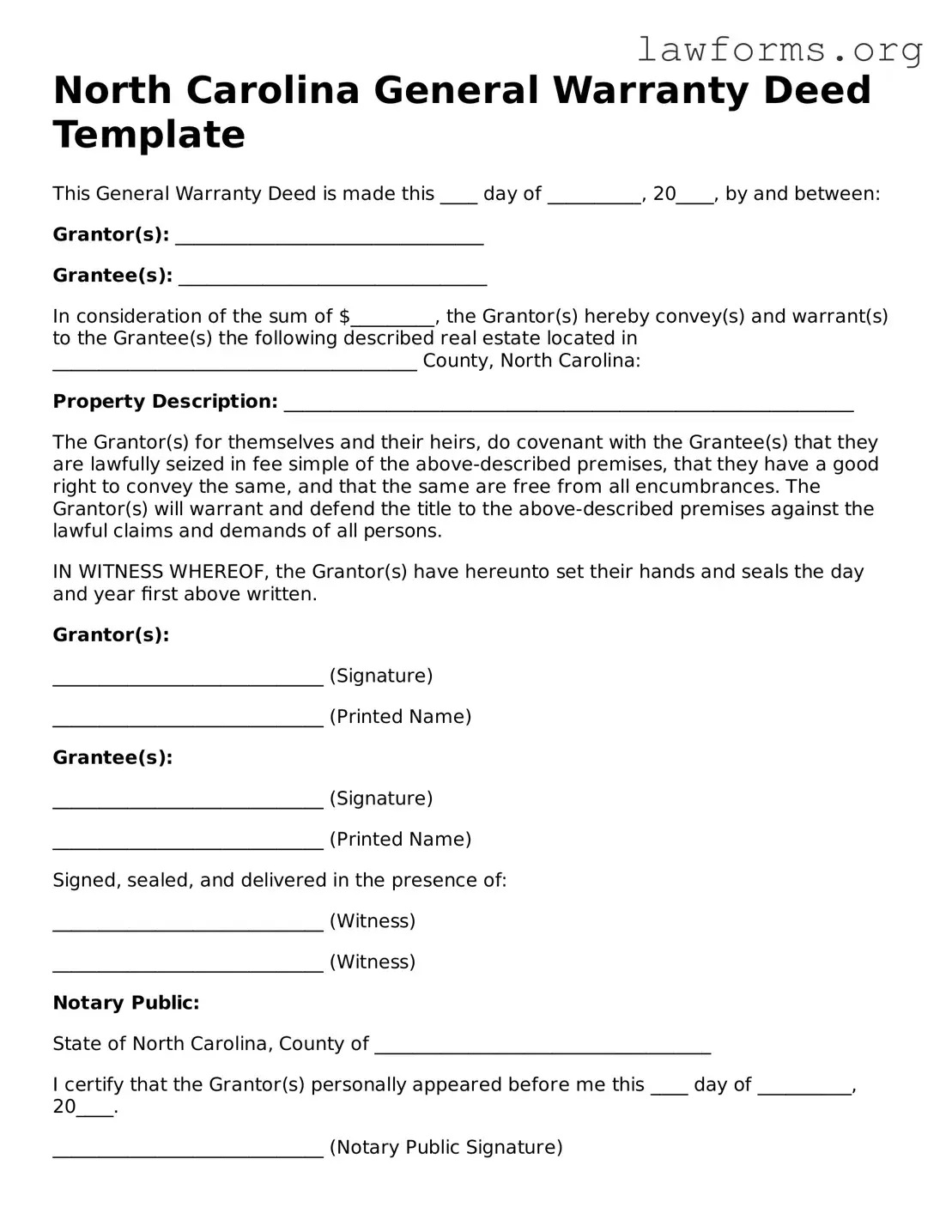North Carolina General Warranty Deed Template
This General Warranty Deed is made this ____ day of __________, 20____, by and between:
Grantor(s):
_________________________________
Grantee(s):
_________________________________
In consideration of the sum of $_________, the Grantor(s) hereby convey(s) and warrant(s) to the Grantee(s) the following described real estate located in _______________________________________ County, North Carolina:
Property Description:
_____________________________________________________________
The Grantor(s) for themselves and their heirs, do covenant with the Grantee(s) that they are lawfully seized in fee simple of the above-described premises, that they have a good right to convey the same, and that the same are free from all encumbrances.
The Grantor(s) will warrant and defend the title to the above-described premises against the lawful claims and demands of all persons.
IN WITNESS WHEREOF, the Grantor(s) have hereunto set their hands and seals the day and year first above written.
Grantor(s):
_____________________________ (Signature)
_____________________________ (Printed Name)
Grantee(s):
_____________________________ (Signature)
_____________________________ (Printed Name)
Signed, sealed, and delivered in the presence of:
_____________________________ (Witness)
_____________________________ (Witness)
Notary Public:
State of North Carolina, County of ____________________________________
I certify that the Grantor(s) personally appeared before me this ____ day of __________, 20____.
_____________________________ (Notary Public Signature)
My commission expires: ____________
Prepared by: ___________________________________ (Prepared by Name)
